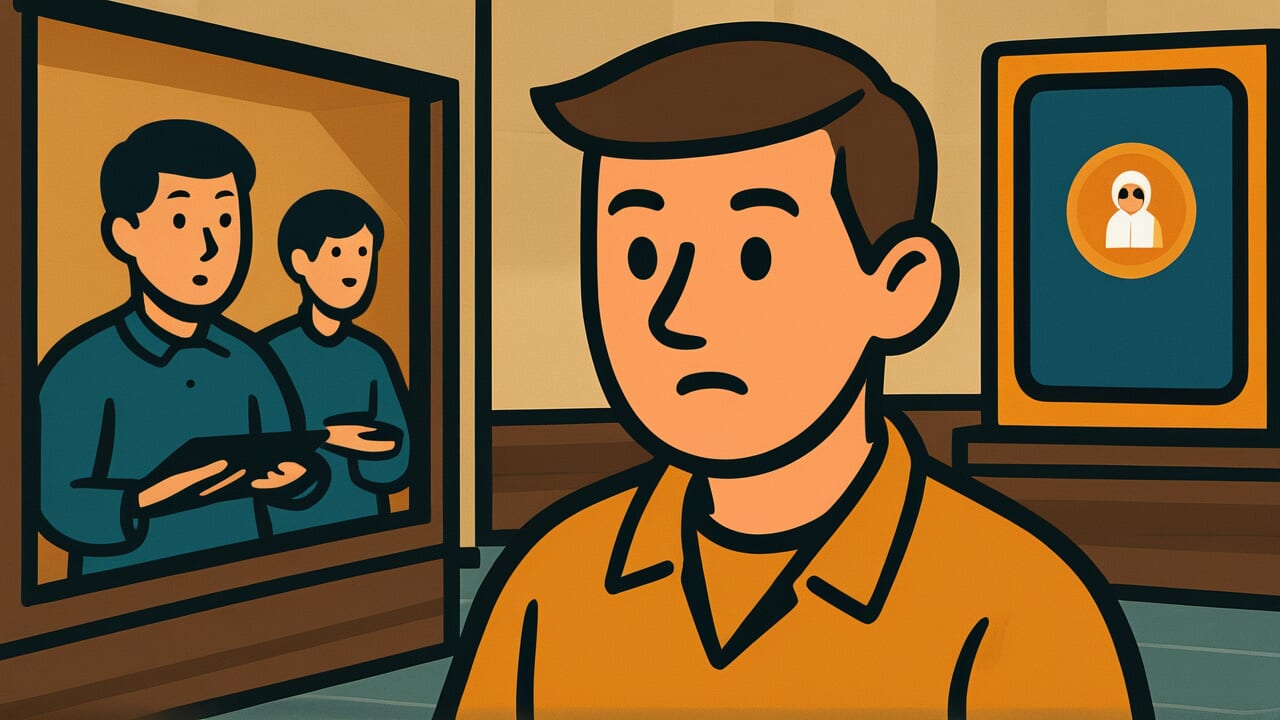How to Read “We shall see what we shall see”
We shall see what we shall see
[wee shal see wot wee shal see]
All words are common and easy to pronounce.
Meaning of “We shall see what we shall see”
Simply put, this proverb means that time will reveal the truth, and we must wait patiently to see what happens.
The literal words repeat the same phrase twice for emphasis. “We shall see” means we will find out or discover something. By saying it twice, the proverb stresses that waiting is necessary. The deeper message is about accepting uncertainty and trusting that answers will come naturally.
We use this saying when facing unclear situations or waiting for results. Someone might say it before a job interview outcome or during a family disagreement. It works when people are worried about the future or trying to predict what will happen. The phrase reminds us that some things cannot be rushed or forced.
What makes this wisdom interesting is how it turns waiting into something positive. Instead of feeling anxious about not knowing, it suggests patience as strength. People often realize this proverb helps them stop worrying about things beyond their control. It transforms uncertainty from a problem into a natural part of life.
Origin and Etymology
The exact origin of this specific phrase is unknown, though similar expressions about waiting and seeing appear throughout history. The repetitive structure suggests it developed as a folk saying rather than from literature. Many cultures have created similar phrases about time revealing truth.
This type of saying became important during eras when communication was slow and information scarce. People had to wait weeks or months for news about harvests, wars, or distant family members. Patience was not just wisdom but a survival skill. Communities needed ways to cope with long periods of uncertainty.
The phrase likely spread through everyday conversation rather than books or formal writing. Its simple structure makes it easy to remember and repeat. Over time, it became a common response to worry or impatience. The saying reached modern usage by helping people deal with life’s natural uncertainties in a more accepting way.
Interesting Facts
The phrase uses repetition as a rhetorical device called epizeuxis, where words repeat for emphasis. This technique appears in many folk sayings because repetition helps people remember important ideas. The structure makes the saying feel more certain and reassuring.
The word “shall” originally indicated strong intention or certainty about future events. In older English, “shall” carried more weight than our modern “will.” This makes the phrase sound more definitive despite being about uncertainty.
Usage Examples
- Mother to teenage son: “You think you’ll ace the test without studying – we shall see what we shall see.”
- Coworker to colleague: “The new manager promises everything will improve – we shall see what we shall see.”
Universal Wisdom
This proverb captures a fundamental tension in human nature between our need to know and our inability to control time. Humans evolved as planning creatures who survived by predicting danger and opportunity. Yet we also learned that excessive worry about unknowable futures wastes mental energy needed for present challenges.
The repetitive structure reveals something deeper about how we process uncertainty. When facing the unknown, our minds naturally cycle through the same concerns repeatedly. The proverb mirrors this mental pattern but transforms it from anxious repetition into patient acceptance. It acknowledges that “seeing” requires both time and the willingness to wait for clarity.
What makes this wisdom universal is how it addresses the gap between human curiosity and natural timing. Every generation faces situations where answers exist but remain temporarily hidden. Parents wonder how their children will turn out. Communities plant seeds without knowing the harvest. The proverb recognizes that some knowledge can only emerge through lived experience, not through thinking or planning. It offers a way to remain engaged with the future while accepting the limits of immediate understanding.
When AI Hears This
Your brain runs a hidden calculator when facing uncertainty. It quietly measures how much mental energy you’re spending on unsolvable problems. When the cost gets too high, something clicks. You automatically switch from “figure it out” mode to “wait and see” mode. This isn’t giving up – it’s your mind being smart about resources.
This mental switching happens because humans learned a crucial survival lesson. Worrying about tomorrow’s unknowns steals energy from today’s real problems. Your ancestors who obsessed over every uncertainty often missed immediate dangers. The ones who could turn off the worry machine survived better. Now your brain does this math automatically without telling you.
What’s remarkable is how this looks like laziness but works like genius. You’re actually performing complex mental accounting while appearing to do nothing. Your mind treats uncertainty like a budget problem, not a puzzle. This quiet wisdom lets you save mental strength for battles you can actually win.
Lessons for Today
Living with this wisdom means learning to distinguish between productive planning and unproductive worrying. The proverb does not suggest passive waiting but rather active patience. This involves preparing for multiple outcomes while avoiding the trap of trying to force certainty where none exists.
In relationships, this understanding helps people navigate conflicts and changes without demanding immediate resolution. Some disagreements need time to work themselves out naturally. Some decisions become clearer after emotions settle or new information emerges. The wisdom encourages staying present and responsive rather than pushing for premature conclusions.
For groups and communities, this perspective supports better long-term thinking. It reminds leaders that some policies and changes need time to show their true effects. It encourages patience with gradual progress rather than demanding instant results. The challenge lies in maintaining hope and engagement while accepting uncertainty. The proverb offers a middle path between anxious control and careless indifference, suggesting that patient attention itself is a form of wisdom.



Comments